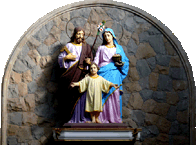|
The English Tamarind, also called the Madras Thorn or Jungle Jalebi is a fast-growing deciduous tree that grows up to 15 meters tall.
Even though it is a deciduous tree, it often gives an illusion of being an evergreen tree as new leaves grow while still shedding the old leaves. It begins shedding its leaves in February, flowers between March to April and bears fruits in June.
The fruits contain a hard red shell that is tough to open and a white fleshy part that protects the flat black seeds within. It can be eaten raw or roasted as they are sweetish in flavor and are relished by birds. The fruits curl up in the form of a coiled bean or an Indian sweet called 'Jalebi', which is where they derive their local name from.
The bark is initially grayish and smooth that turns dark brown with long narrow cracks as it ages. The best way of propagating the tree is through seed germination. Birds help disperse the seeds and bees and other insects help pollinate the tree.
The wood of the tree was used for building and construction purposes as well as to create agricultural implements. The leaves were used as fodder for goats and cattle. Besides these, the tree was used as a source of nectar, a wind breaker and a live fence.
The roots of the tree contain the bacteria called Rhizobium that helps the tree become a nitrogen-fixing plant (plants that convert atmospheric nitrogen into a compound that is required for the plant's own growth).
IMPORTANT: The information on this website has been compiled from reliable sources, such as reference books. It is not a substitute for medical advice or treatment. Readers should always consult their physician before using or consuming a plant for medicinal purposes.
--- Click here for information about other trees on Holy Family Church campus ---
|
